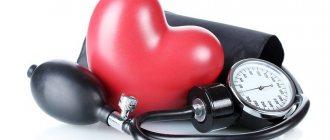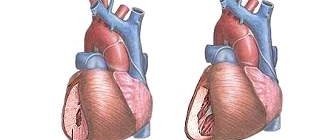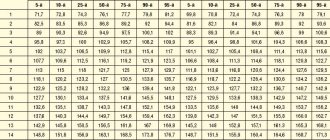It would seem, what do the kidneys have to do with it, if in our body it is the heart that plays the role of a pump that pumps blood? But since pressure is a derivative of the work of three interdependent components, the heart, vascular tone and kidneys, in the process of evolution it so happened that the function of the pressure regulator went to the kidneys. Otherwise, they would not be able to filter the liquid entering the human body.
When this function is disrupted, the pressure drops, a large amount of a special substance, renin, begins to enter the blood, which is converted into angiotensin, which has the ability to cause vasoconstriction and stimulate the production of the adrenal hormone aldosterone. This hormone is capable of retaining sodium and water in the body, the level of circulating blood no longer corresponds to the volume of the vascular bed, which causes renal hypertension.
How to treat kidney pressure?
Treatment is aimed at treating the underlying renal pathology and relieving symptoms. The only way to reduce renal pressure is with medications:
- ACE inhibitors – enalapril, lisinopril, captopril. They inhibit the action of the enzyme that converts angiotensin I to angiotensin II. This eliminates the constant support of blood vessels in tone;
- Angiotensin II receptor antagonists - losartan, candesartan. The drugs reduce the sensitivity of receptors that, when angiotensin appears, signal the synthesis of aldosterone;
- Diuretics – spironolactone, furosemide. Facilitate the removal of fluid and excess sodium ions.
The therapeutic course is selected individually and in accordance with the nature of the underlying disease. The answer to the question of how to treat increased renal pressure necessarily includes a diet that limits the amount of salt.
It is important to restore normal hemodynamics, water balance in the body, remove excess fluid, normalize cardiac activity, and the nature of glomerular filtration. Among the ways to radically eliminate renal manifestations, conservative and surgical techniques can be distinguished. The selection of a specific regimen is made by the doctor. The list of drugs is wide: non-steroidal anti-inflammatory drugs, glucocorticoids in different dosages, antibacterial agents and antiseptics for internal use, etc.
- Pyelonephritis is treated with anti-inflammatory drugs and antibiotics.
- For glomerulonephritis, immunosuppressants are used, but with caution.
- Nephritis is eliminated in the same way as pyelonephritis, but surgical intervention is possible.
Surgical treatment is indicated in a strictly limited number of cases, if there is no other option.
The following basic methods are used:
- angioplasty - a catheter is inserted through an artery into a narrowed vessel, compressed air is passed through the latter so that it expands the walls of the vessels, returning them to their original state;
- stenting - instead of air flow, the vessel expands with a stent;
- bypass surgery - in this case, severely damaged areas of veins and arteries are excised, and the blood is redirected through healthy vessels.
Antibiotics
Even with minor renal failure, drugs in this group should be prescribed by a doctor. Patients with nephrology should avoid sulfonamides, aminoglycosides, ciprofloxacin, amphotericin. The drugs disrupt normal filtration and cause an increase in urea and creatinine levels in the blood. When selecting therapy, possible risks and potential benefits should be weighed. It is imperative to notify your doctor about renal pathology, since there are a number of effective analogues without toxic effects.
When prescribing tablets, the glomerular filtration rate should be monitored in order to adjust the regimen and dose of the antibiotic.
Symptoms and first signs
In adults, pathology manifests itself in two groups of signs: symptoms of high blood pressure and manifestations of kidney disease.
The slow-onset form of renal pressure can be recognized by the following symptoms:
- persistent high blood pressure (both upper and lower);
- headache;
- dizziness;
- reduced performance;
- muscle weakness;
- dyspnea;
- feeling of palpitations and discomfort in the chest.
In the fast-flowing form, the following symptoms appear:
- strongly increased lower pressure (120 mm Hg and above);
- decreased visual acuity;
- constant headache, especially in the back of the head;
- dizziness;
- nausea and vomiting.
Renal or cardiac?
There is an opinion that the upper pressure indicator is cardiac, and the lower one is renal. “The top number is systolic blood pressure, it shows the pressure in the arteries at the moment when the heart contracts and pushes blood into the arteries, it depends on the force of the heart contraction, the resistance that the walls of the blood vessels exert, and the number of heartbeats per unit time. Therefore, in general, we can say that this indicator reflects the work of the heart, although, of course, other factors also take part in this process,” says Maria Benevskaya.
It is also not worth ruling out that the lower indicator reflects kidney function. “The bottom number is diastolic blood pressure, which shows the pressure in the arteries when the heart muscle relaxes. This is the minimum pressure in the arteries and reflects the resistance of peripheral vessels. Since vascular tone is regulated by chemicals and the autonomic nervous system, lower blood pressure indicates the extent to which neurohumoral regulation is carried out correctly. In turn, neurohumoral reactions occur mainly in the kidneys, which is why there is an opinion that the “lower” pressure is renal. But it would be more correct to note that lower pressure reflects the work of blood vessels and kidneys,” says the cardiologist.
Lack of oxygen, loss of strength. How pressure surges affect the brain Read more
Prevention measures
To prevent the occurrence of renal hypertension, it is important to follow simple but effective preventive measures on a regular basis. To do this you need:
- Symptomatic arterial hypertension
- do not forget to measure blood pressure;
- in case of alarming symptoms, seek qualified help;
- do not overuse salty foods;
- monitor body weight;
- give up cigarettes and alcoholic drinks;
- do not overcool;
- strengthen the immune system in every possible way;
- to live an active lifestyle.
What is this?
The symptoms and treatment of kidney pressure depend on many factors. Even young people are susceptible to this pathology. Only a doctor can find out the cause and eliminate the disease itself; it will not be possible to cope with the situation on your own.
Arterial hypertension is considered one of the most common ailments, but few people know that the kidneys are often involved in the occurrence of the disease. Malfunctions of this organ directly affect blood pressure. Doctors call this disease “renal hypertension.” The relationship between kidneys and blood pressure is very close. The job of the kidney is to regulate fluid levels in the body, as well as remove harmful and toxic substances from the body. If the kidneys do not do their job well, pressure increases in the circulatory system.
In addition, renal pressure may be below normal, which also indicates the presence of pathology in this area of the body. In this case, the water level in the body is below normal, and a mild degree of dehydration is observed.
Renal hypertension is not considered an independent disease. This condition develops under the influence of certain pathological factors that have a destructive effect on the kidneys. This situation provokes a malfunction of the organ, as a result of which there is a decrease in blood flow, sodium and water retention in the kidneys, resulting in swelling. The accumulation of sodium ions leads to swelling of the vascular walls, increasing their sensitivity.
For this reason, the organ's receptors actively produce an enzyme called renin. After certain pathological transformations, this substance affects the tone of blood vessels, reducing their patency, which will inevitably lead to an increase in pressure in this area.
Treatment for renal hypertension depends on the type of the disease. With one course, medications can help, but with another, only surgical intervention is necessary.
Classification of renal hypertension:
- Parenchymatous. Appears as a consequence of nephrogenic pathologies that cause damage to the vascular tissue of the kidney parenchyma, as well as the glomeruli of the organ.
- Vasorenal. It occurs when the arteries of the kidneys are destroyed, which causes poor blood supply to the area. It can be acquired and congenital.
- Mixed. It is diagnosed by a combination of the first two types of pathology and is considered the most dangerous form of the disease.
Half of the patients have parenchymal renal hypertension; this type of disease is the most common. The consequence of this disease can also be its progression, as a result of which the tissue of the kidney itself dies, and substances that regulate vascular tone are synthesized in smaller quantities. However, more often this development of the situation concerns elderly and senile people.
Clinical picture
Symptoms of renal hypertension are summarized from signs characteristic of arterial hypertension and diseases of the urinary system. The severity of the pathological process and the degree of its external manifestation directly depend on what clinical form of the disease one has to deal with. Typical symptoms of persistent high blood pressure due to kidney problems are:
- Strong headache;
- rapid pulse;
- causeless weakness;
- renal artery stenosis;
- the appearance of floating spots before the eyes;
- frequent urination;
- swelling of the body;
- pain syndrome in the lumbar region.
There are some differences between the malignant and benign course of nephrogenic hypertension. The aggressive form of the disease usually develops at lightning speed. Diastolic blood pressure can jump to 120 mmHg. Art. and almost equal to systolic. A person is worried about a painful headache in the occipital region, dizziness, nausea, and increased body temperature. Due to damage to the optic nerve, blurred vision occurs.
Benign renal hypertension is characterized by a slow progression. It is characterized by a uniform increase in blood pressure. The patient complains of general malaise, shortness of breath, pressing headache and pulsation in the chest caused by an acceleration of the heart rate.
Causes
Renal hypertension is classified as secondary (symptomatic) hypertension. This kidney pathology occurs in 7-10% of cases of increased blood pressure. The cause of the condition can be any kidney disease:
- fibromuscular dysplasia of the renal artery;
- polycystic kidney disease;
- atherosclerosis, thrombosis, compression of the renal artery;
- nephropathy;
- kidney malformations;
- glomerulonephritis;
- systemic connective tissue diseases;
- kidney amyloidosis;
- chronic pyelonephritis and other pathologies that can cause changes in the structures of the kidneys.
Very often, renal hypertension occurs in combination with diabetes mellitus and other diseases of the endocrine system. Quite often, the development of renal hypertension occurs while taking certain medications.
Diagnosis of renal hypertension
The disease is diagnosed by laboratory methods, urography, radioisotope renography, and kidney biopsy.
At the initial visit, a general examination is prescribed. Among the mandatory studies are tests of urine and blood from the veins of the kidney to identify the enzyme that provokes an increase in blood pressure.
Based on the test results, the optimal treatment regimen is selected, including the need for surgical intervention.
To study in detail the causes of the disease and the extent of organ damage, an ultrasound is performed (data on the size and structure of the kidneys, possible tumors, cysts, signs of inflammation), and if malignant changes are suspected, an MRI is prescribed.
A symptom of vasoreal PH when listening to the area above the navel is a systolic murmur radiating back to the spine and sides of the abdomen. Changes in the pattern of eye vessels are monitored: the retina swells, the vessels are narrower than normal, and hemorrhages are observed. Vision decreases. Diagnosis of renal failure is a very important stage of therapy. Real help to the patient is possible only after identifying all the causes of increased blood pressure.









